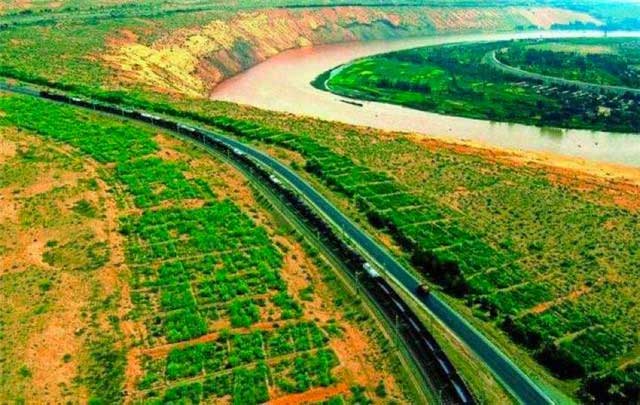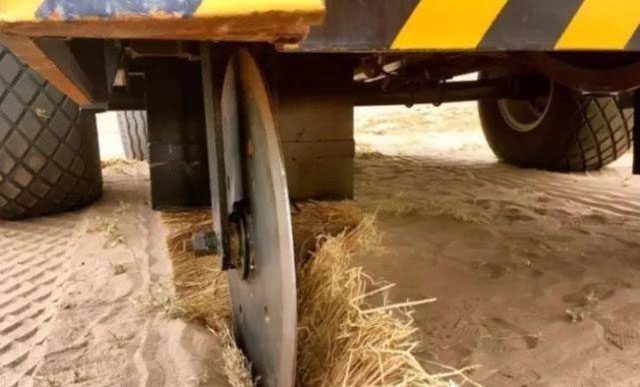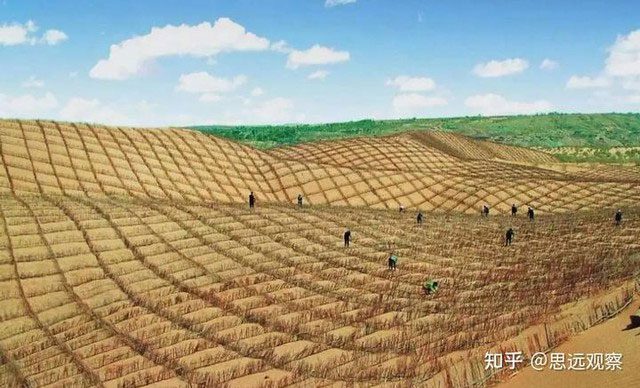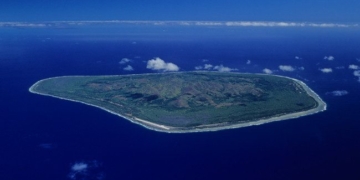The center of the Tarim Basin (in Xinjiang, China) is the Taklamakan Desert – the largest desert in China and the second largest in the world.
The “Sea of Death” Taklamakan spans an area of up to 320,000 square kilometers with an extremely harsh climate. It is a fact that the world’s third-largest country has been suffering from desertification for the past 70 years.

The Taklamakan Desert covers an area of up to 320,000 km2.
The most severe desertification occurs in the Northwest and Northern China. Whenever there is a major sandstorm, cities like Beijing, Tianjin, Xi’an, and others are covered in yellow sand.
To green the Taklamakan Desert specifically and many other desert/arid regions in general, China has made considerable efforts to invent machines that can transform these “dead lands” into lush areas that contribute to the economy.
China’s “Sand-Eating Monster”
In its long battle against desertification, China has developed a type of “sand-eating monster that can make 40 acres of sand disappear in a day.” This “monster” was invented in China in 2016.
News.sciencenet.cn reported at the time that this “sand-eating monster” is a large vehicle – designed to help people in desert areas manage sand and plant trees (transforming deserts into arable land) developed by Beijing Forestry University (China) six years ago.
This autonomous device integrates functions for three-dimensional sand stabilization, spraying, planting grass seeds, trimming tree stumps, and irrigation. It is primarily used in windbreak and sand stabilization, environmental management, and vegetation restoration in deserts, sandy areas, the Gobi Desert, and desertified regions in China.

China has invented a machine that can transform “dead lands” into lush areas, contributing to the economy.
It is known that the multi-functional three-dimensional sand stabilization vehicle developed by Professor Liu Jinhao of Beijing Forestry University can accelerate the greening process of deserts while playing a crucial role in windbreaks, sand stabilization, and improving ecology in this country’s deserts and sandy border areas.
Optimal Efficiency
The tree planting efficiency is 2,000 seedlings per hour, the shrub cutting efficiency is 2,860 square meters per hour, and the pesticide spraying efficiency is 0.61 hectares per hour.
As a populous country, China requires a significant amount of arable land; failing to combat desertification would result in a waste of land resources, severely impacting grain production and livestock development.

This vehicle is designed to help people in desert areas manage sand and plant trees.

The machine is used in windbreak and sand stabilization.
Despite these challenges, China has made significant efforts. Over the past 40 years, the country has planted 66 billion trees in desert areas to promote greening.
This is the effort of countless people “fighting” against the sand from one generation to the next. With the advent of the “sand-eating monster”, residents in barren desert regions have received substantial support.
In just one day, it can “swallow” 40 acres of sand, transforming the desert into arable land for residents. In one hour, this “monster” can plant 2,000 seedlings.
Moreover, this machine only takes 3 to 6 months to complete the desert area that many people initially had to work on for a year.
As a result, it can enhance crop productivity, providing residents with a steady annual income.
Planting trees in the desert is incredibly challenging:
First is selecting the location; not every desert is suitable for planting trees; you must choose sandy areas with groundwater. Therefore, planting in the desert usually starts from the edges, moving inward.
Once a suitable site is found, tree planting projects cannot be executed easily; the right species must be selected.
Specifically, initially, desert trees are planted alongside low shrubs, such as sea buckthorn and Achnatherum splendens.
Second, the weather in the desert is harsh, with scorching sun during the day and low temperatures at night. During sandstorms, sand can destroy crops, and strong winds can uproot plants.
Thus, with technology stepping in, these challenges are somewhat alleviated, helping residents increase production and improve their daily lives.


















































